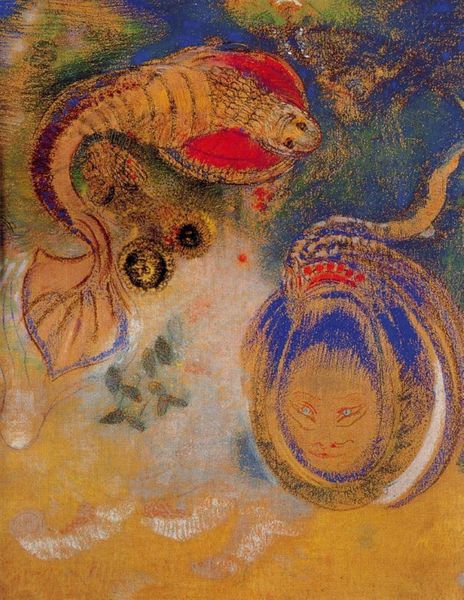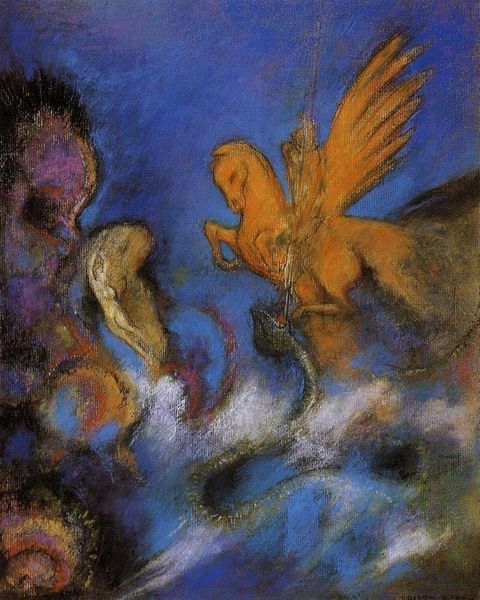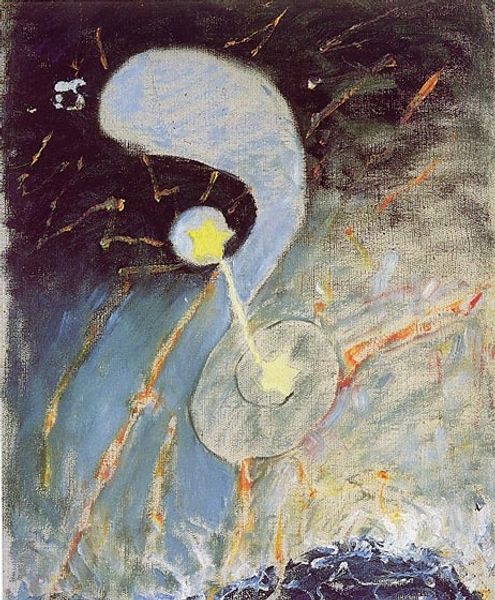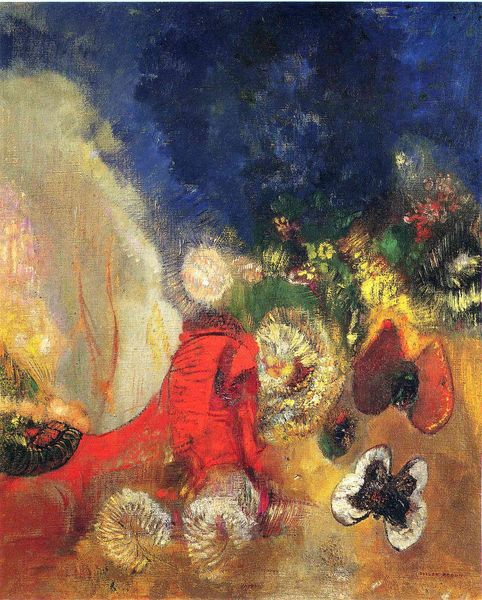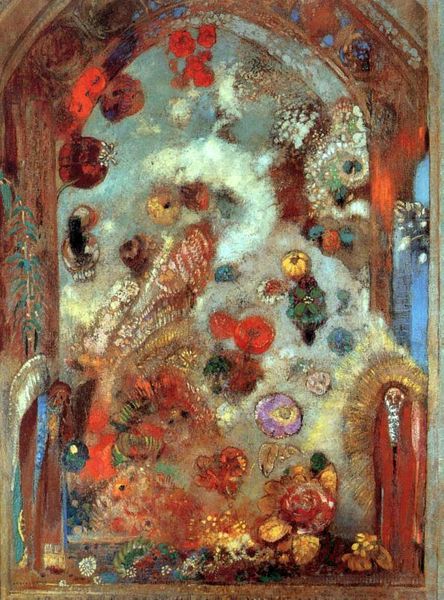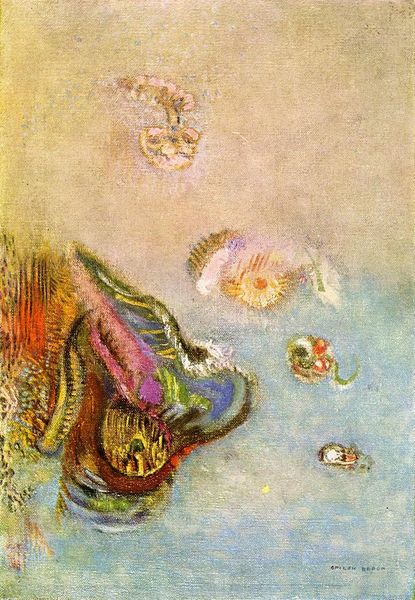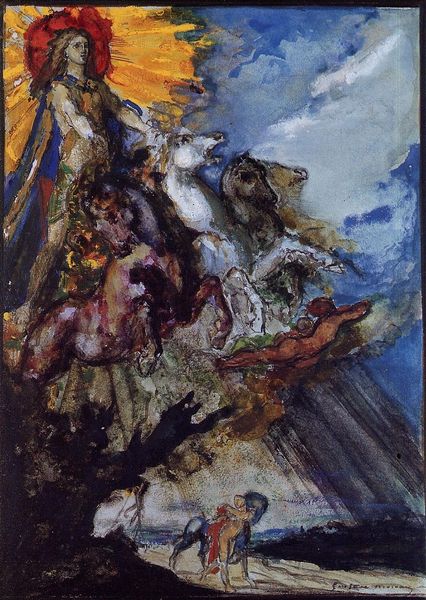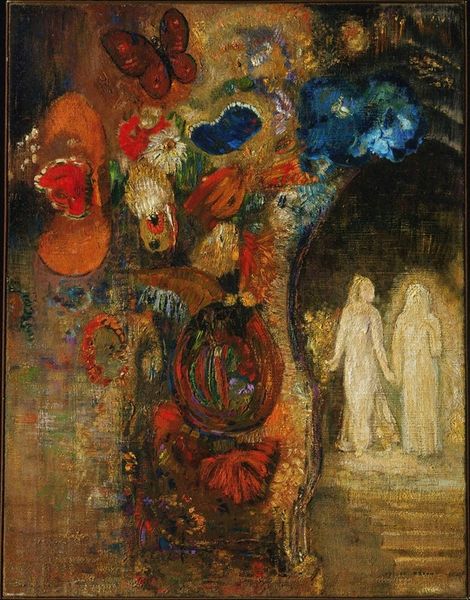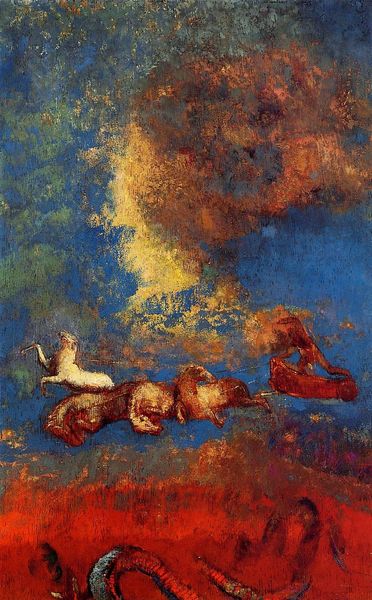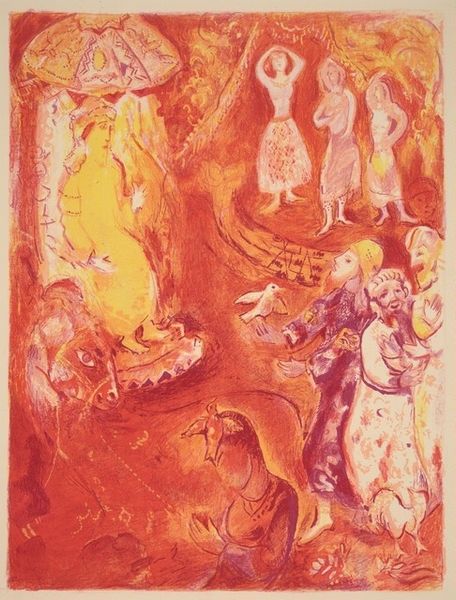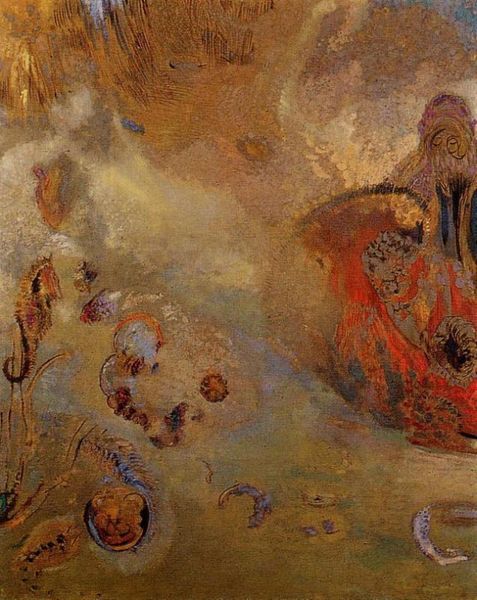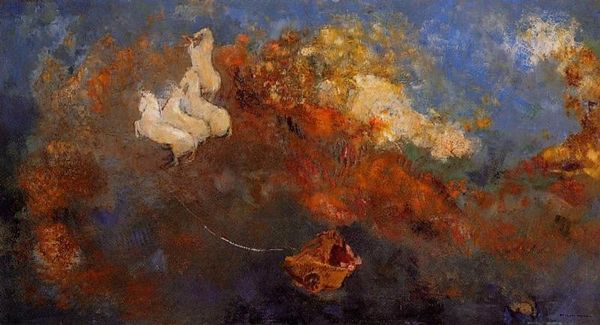
painting, oil-paint
#
animal
#
painting
#
oil-paint
#
landscape
#
fantasy-art
#
figuration
#
oil painting
#
roman-mythology
#
horse
#
mythology
#
symbolism
#
watercolor
Copyright: Public domain
Curator: Well, I must say, looking at this canvas gives me a slightly unsettling yet whimsical feeling. The way the colors blend and blur makes it dreamlike, but the imagery… it’s unusual. Editor: It’s Odilon Redon’s "Apollo's Chariot," created around 1912. Redon was a pivotal figure in the Symbolist movement, often delving into mythology and the subconscious in his works. This piece, an oil painting, is currently in a private collection. Curator: Knowing its title adds another layer. But even without that, there’s something both ancient and oddly modern about it, isn’t there? I mean, Apollo in his chariot is a classic mythological image, a symbol of reason and art. Editor: And male power and dominance. Seeing Apollo framed with such ethereal, almost vulnerable imagery…It begs the question whether it’s glorification or a subversion. The murky atmosphere feels heavy, almost oppressive, far from the sunlit clarity one might expect. How are we supposed to interpret those enormous butterflies and what appears to be a fleshy serpent-like figure dominating the lower portion? Curator: Redon was fascinated by dreams and the irrational. In many ways, symbolism arose in reaction to academic art of its time. As far as subject matter, Redon looked beyond contemporary urban life, preferring inner experience. You could argue, looking at his artistic formation in 19th century France, he used mythology to confront bourgeois materialism with the interior life. He presents us with a god of reason and the arts but does it using the illogical, unruly language of dreams. Editor: Perhaps he's using mythology to question the very narratives of power they represent? What about seeing Apollo here not as a symbol of dominance, but trapped, floating on this soft but unclear chariot in the clouds? In that sense, is this an interpretation about art, about creativity? Is that not also about struggle, and ambiguity? Curator: That's compelling. Art, for Redon, became a means of psychological exploration, a quest for the soul and unconsciousness, turning art inward, and reflecting broader cultural shifts toward internal subjective realities. Editor: Indeed. It serves as a potent reminder that even the most established symbols can be reimagined, reinterpreted and challenged through art. Thanks for illuminating that for me. Curator: My pleasure, and thank you, too. I think the beauty of this work, much like Redon’s broader aims, invites this kind of reflective thought. It is something visitors will likely consider on a deeper level after this discussion.
Comments
No comments
Be the first to comment and join the conversation on the ultimate creative platform.
